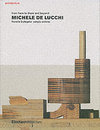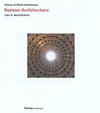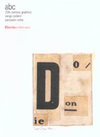
-
 Anglický jazyk
Anglický jazyk
The Elements of Dynamic Symmetry
Autor: Jay Hambidge
2022 Reprint of the 1926 edition. Exact facsimile of the original edition and not reproduced with Optical Recognition. "Is design intuitive or is it consciously and methodically worked out? Are there basic rules governing design that, when learned, will... Viac o knihe
Na objednávku, dodanie 2-4 týždne
16.02 €
bežná cena: 17.80 €
O knihe
2022 Reprint of the 1926 edition. Exact facsimile of the original edition and not reproduced with Optical Recognition. "Is design intuitive or is it consciously and methodically worked out? Are there basic rules governing design that, when learned, will facilitate the creative process? These questions have been asked by artists, art historians, and art critics throughout the ages. Convinced that design was not purely instinctive, Jay Hambidge (1867-1924) spent much of his life searching for the technical bases of design. He found his answer in dynamic symmetry, one of the most provocative and stimulating theories in art history. Hambidge's study of Greek art convinced him that the secret of the beauty of Greek design was in the conscious use of dynamic symmetry - the law of natural design based upon the symmetry of growth in man and in plants. But Hambidge, who was not only a theoretician but also a practicing artist, did much more than analyze classical art and its principles of design: he worked out a series of root rectangles that the artist, using the simple mathematics supplied in this book, can easily follow and apply in his own work. Whether read for its historical importance in art theory, for its illuminating insights into Greek art, or for its practical value to today's artists and commercial designers, The Elements of Dynamic Symmetry has much to offer anyone who is interested in the principle of design." Description, Dover Publications editon. Contents: The dynamic symmetry of the plant Part I. Simple rectangles -- Lesson 1. The square (or unity) -- Lesson 2. The rectangle of the whirling squares (1.618) and the root-five rectangle (2.236) -- Lesson 3. The application of areas -- Lesson 4. The reciprocal -- Lesson 5. The diagonal -- Lesson 6. The root-two rectangle (1.4142) -- Lesson 7. The root-two rectangle and the application of areas -- Lesson 8. The root-three rectangle -- Lesson 9. The root-four rectangle (2.) -- Lesson 10. The root-five rectangle (2.236) -- Lesson 11. The spiral and other curves of dynamic symmetry -- Lesson 12. General constructions for similarity of figure -- Part II. Compound rectangles -- Lesson I. The complement -- Lesson II. Rhythmic themes of the whirling square rectangle -- Lesson III. The square plus a root-five rectangle (1.4472) and a whirling square rectangle applied to a square -- Lesson IV. Compound rectangles within a square -- Lesson V. Further analyses of the square -- Lesson VI. The addition of unity to dynamic areas -- Lesson VII. The gnomon -- Lesson VIII. Ratios most frequently used, their reciprocals and simple divisions -- Lesson IX. Ratios most frequently used--continued -- What instruments to use and how to use them -- Definitions selected from the thirteen books of Euclid's Elements.
- Vydavateľstvo: Martino Fine Books
- Rok vydania: 2022
- Formát: Paperback
- Rozmer: 234 x 156 mm
- Jazyk: Anglický jazyk
- ISBN: 9781684227648











